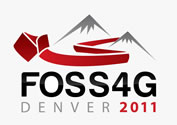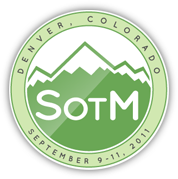Expanding Map Server Performance Benchmarks for Distributed Disaster Response
Session Type:
Academic Session
Presenter(s):
Charles Rose, MIT Lincoln Laboratory
Colin Mayer
In recent years, the nation’s disaster response capability has received significant attention due to its continued importance for both natural disasters and terrorist attacks. During these incidents there is a critical need to quickly and reliably enable distributed command and control among First Responders. MIT Lincoln Laboratory (MIT LL) has partnered with the California Department of Forestry and Fire Protection (CAL FIRE) since 2007 to develop the Next-Generation Incident Command System (NICS, formerly LDDRS) to research, design, and implement an open, distributed web-based situational awareness system for First Responders under the sponsorship of the Department of Homeland Security Science & Technology Directorate (DHS S&T).
NICS supports distributed command and control by enabling geospatial collaboration in a Web browser environment. The system is built upon open source standards and protocols to minimize licensing restrictions and maximize availability to the budget limited First Responder community.
Geospatial data feeds are an integral component of NICS and map server performance directly impacts First Responders’ ability to collaborate effectively during disaster response. Performance evaluations are vital for determining an appropriate map server configuration. Previous efforts to characterize map server performance have focused on server request latency as the primary metric. While response time is an adequate performance metric in a traditional map server environment, it does not provide the complete characterization necessary for evaluating deployments in environments with potential resource or connectivity limitations. This level of characterization is of particular importance to NICS, as reliable connectivity and resources cannot be guaranteed during disaster response.
This paper investigates a versatile, comprehensive method for determining map server configuration performance in both traditional and non-traditional environments. The testing procedure draws from previous map server benchmarking efforts and expands testing and measurements in several areas. In addition to standard request latency measurements, performance metrics include server resource usage to evaluate hardware requirements, and network traffic to assess bandwidth limitations. Multiple map service protocols are tested including basic (WMS, WFS) and tiled (WMS-C, TMS, WMTS) configurations of several spatial data sources, with varying numbers of users and request frequencies. The results provide a more complete understanding of map server performance and are used to guide Quality of Service (QoS) expectations and hardware selection.
Speaker Bio:
Charles Rose received his B.S. degree in electrical engineering from Virginia Tech. Currently, he conducts research in the surveillance systems group at MIT Lincoln Laboratory.
Schedule info
Time slot:
Fri, 09/16/2011 - 1:30pm - 2:00pm
Room:
Spruce 










